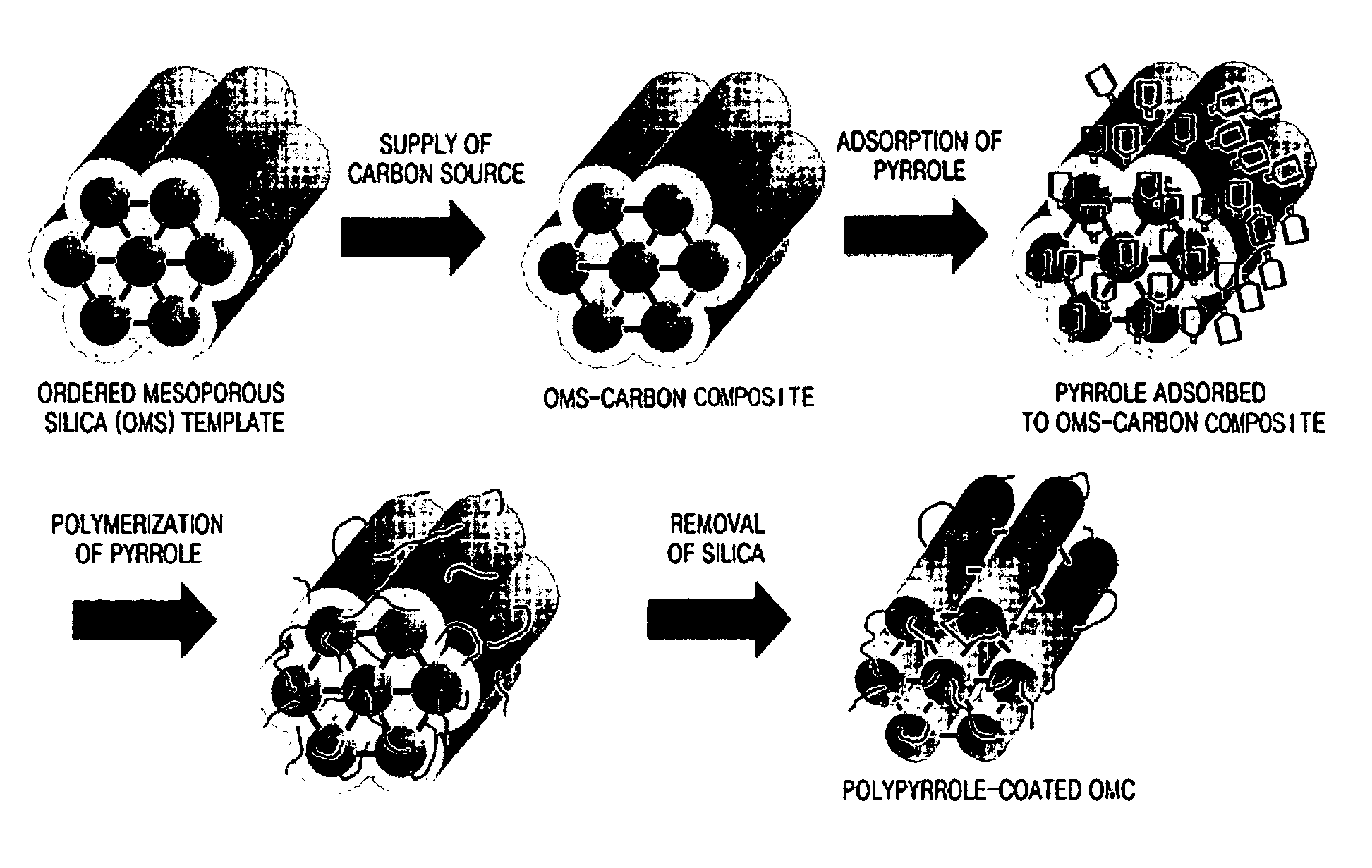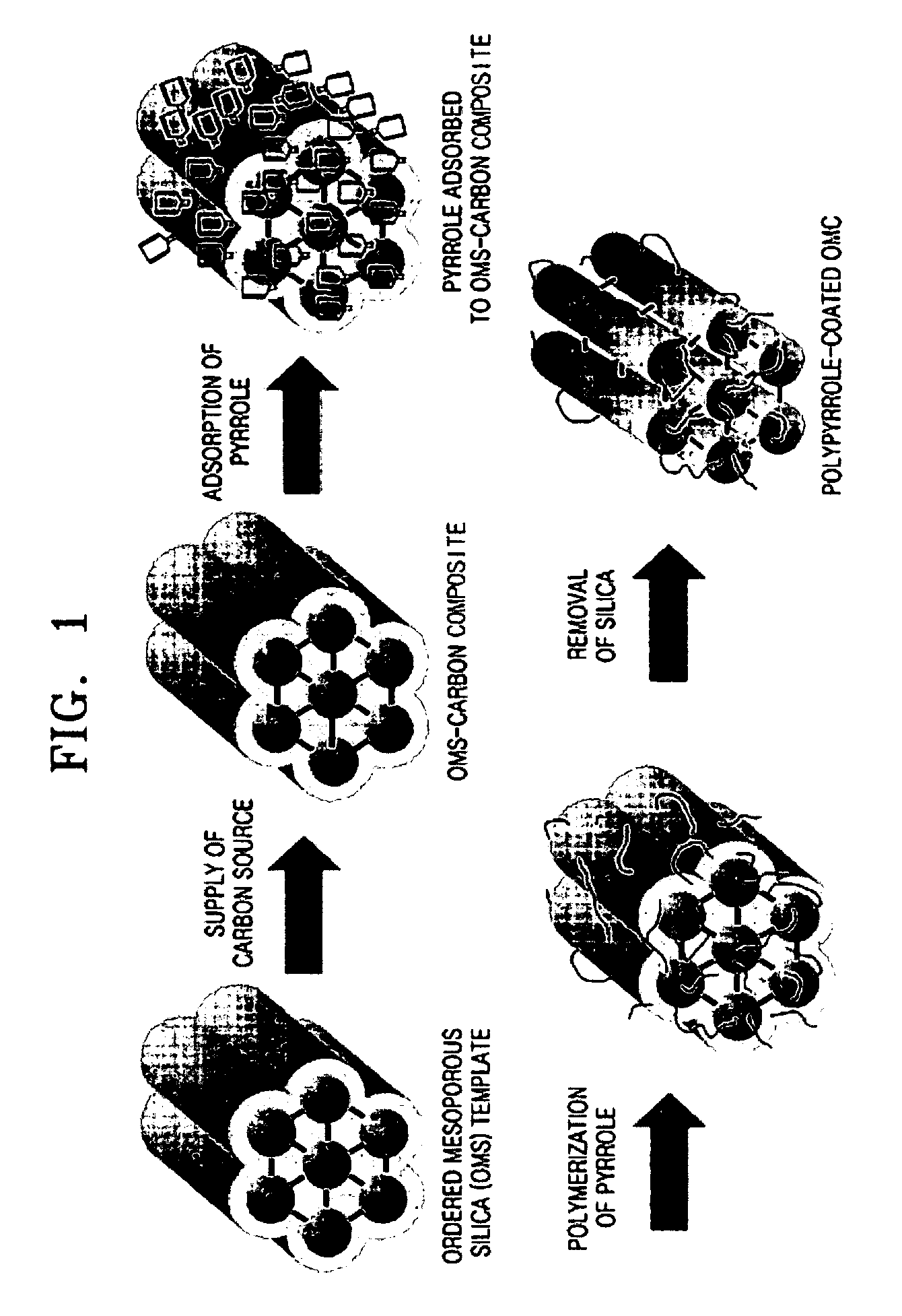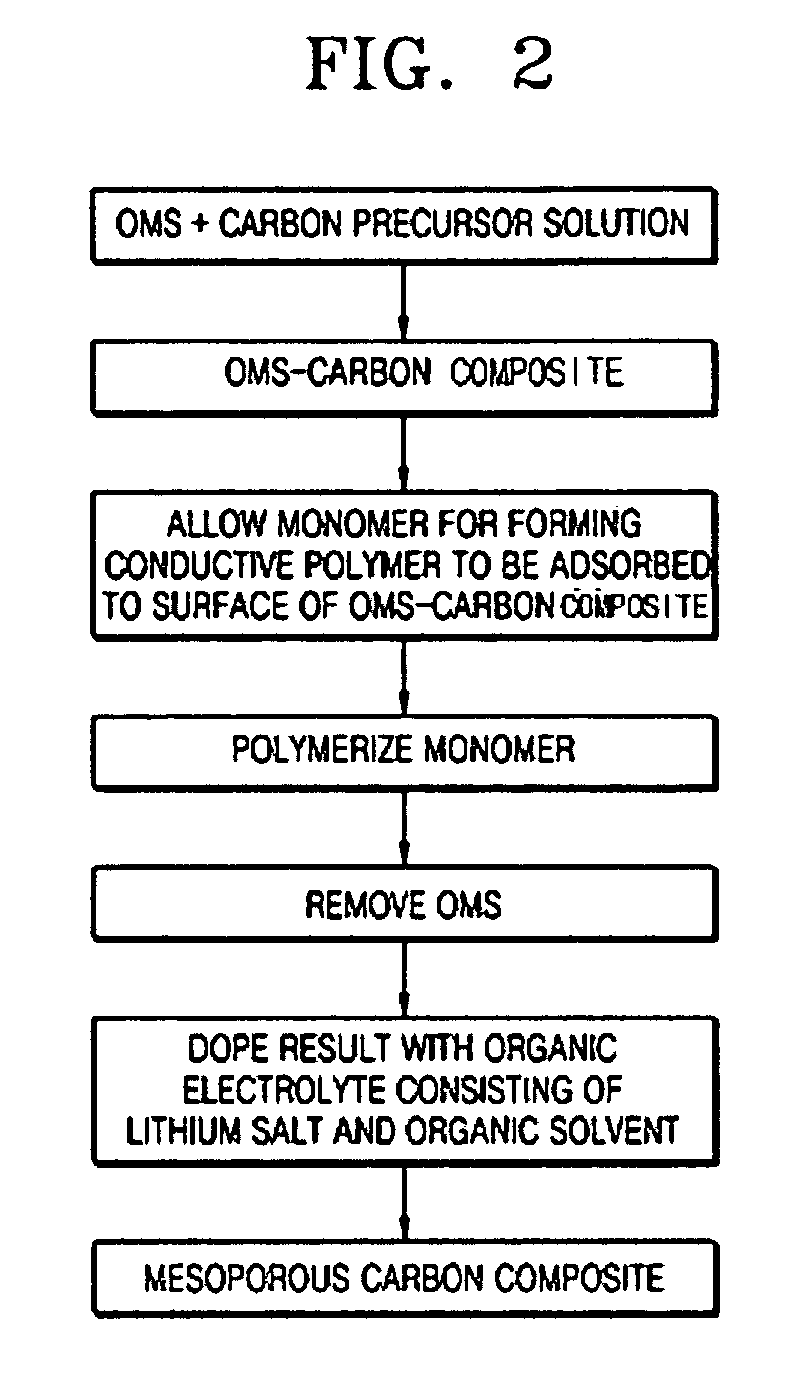Mesoporous carbon composite, method of preparing the same, and fuel cell using the mesoporous carbon composite
a mesoporous carbon composite and carbon composite technology, applied in the direction of cell components, sustainable manufacturing/processing, physical/chemical process catalysts, etc., can solve the problems of increasing the amount of catalyst required, poor connection of micropores of such amorphous microporous carbon particles, and increasing the manufacturing cost of dmfc. , to achieve the effect of reducing the resistance of the sh
- Summary
- Abstract
- Description
- Claims
- Application Information
AI Technical Summary
Benefits of technology
Problems solved by technology
Method used
Image
Examples
example 1
Preparation of Mesoporous Carbon Composite
[0083] 0.8 g of phenanthrene and 2.4 g of para-toluene sulfuric acid were completely dissolved in 6 mL of acetone to prepare a homogeneous precursor mixture. The precursor mixture was divided into three parts in a weight ratio of 4:3:2, to thus prepare solution A, B, and C, respectively. 1 g of SBA-15, an OMS material, was impregnated with solution A. The impregnated SBA-15 was dried in a hood at room temperature for 30 minutes, and then dried at 160° C. for 2 hours. The dried result was impregnated with solution B, and then was dried as described above. The result was treated in the same manner as described above except that the solution C was used. The dried result was cooled to room temperature, slowly heated to 200° C. for 1 hour, and maintained for 6 hours. Then, the result was slowly heated to 900° C. for 4 hours and maintained for 2 hours to form an OMS-carbon composite.
[0084] The OMS-carbon composite was immersed in 50 ml of a 1M p...
example 2
Manufacture of Supported Catalyst And Fuel Cell
[0102] 0.5 g of the mesoporous carbon prepared in Example 1 was placed in a vinyl bag, and 0.9616 g of H2PtCl6 was dissolved in 1.5 ml of acetone. The H2PtCl6 solution was added to the vinyl bag containing the mesoporous carbon.
[0103] The mixed solution was dried in air for four hours, transferred to a crucible, and then dried in a drying device at 60° C. overnight. Then the crucible was placed in an electric furnace through which nitrogen was passed for 10 minutes. Then, hydrogen was passed through while the temperature was increased from room temperature to 200° C. and then maintained at 200° C. for 2 hours so that the Pt salt impregnated in the mesoporous carbon was reduced. Then, the gas flowing in the electric furnace was replaced with nitrogen. The temperature was increased by 5° C. / min to 250° C., maintained for 5 hours, and then slowly cooled to room temperature. Then, the result was impregnated with 0.9616 g of H2PtCl6 dissol...
PUM
| Property | Measurement | Unit |
|---|---|---|
| pressure | aaaaa | aaaaa |
| diameter | aaaaa | aaaaa |
| Bragg angle 2θ | aaaaa | aaaaa |
Abstract
Description
Claims
Application Information
 Login to View More
Login to View More - Generate Ideas
- Intellectual Property
- Life Sciences
- Materials
- Tech Scout
- Unparalleled Data Quality
- Higher Quality Content
- 60% Fewer Hallucinations
Browse by: Latest US Patents, China's latest patents, Technical Efficacy Thesaurus, Application Domain, Technology Topic, Popular Technical Reports.
© 2025 PatSnap. All rights reserved.Legal|Privacy policy|Modern Slavery Act Transparency Statement|Sitemap|About US| Contact US: help@patsnap.com



